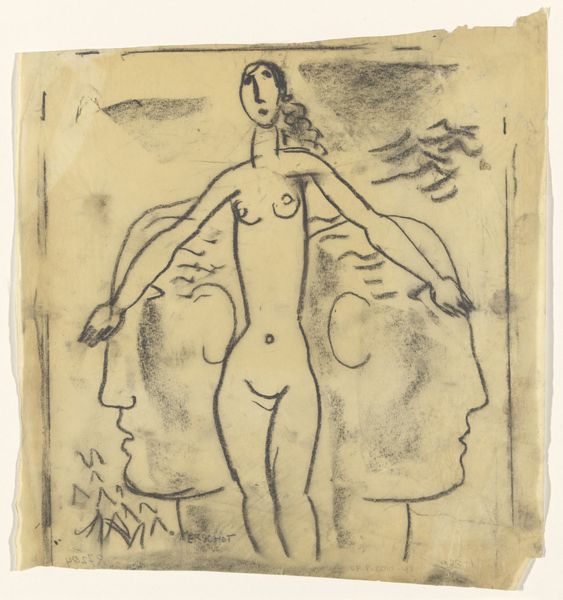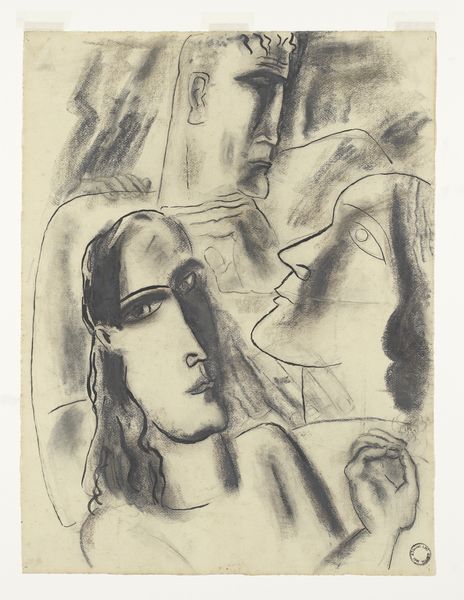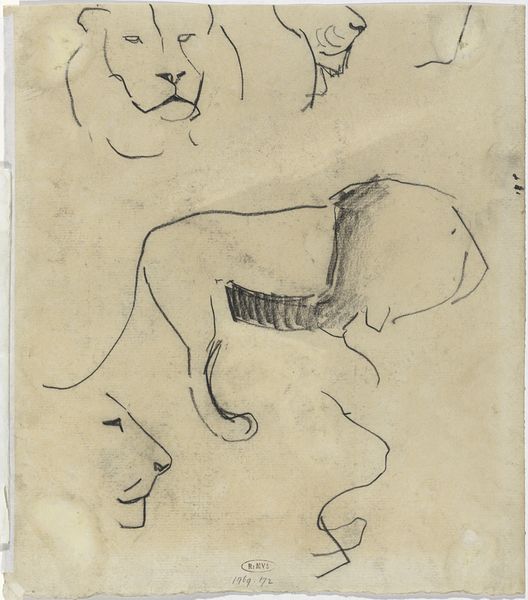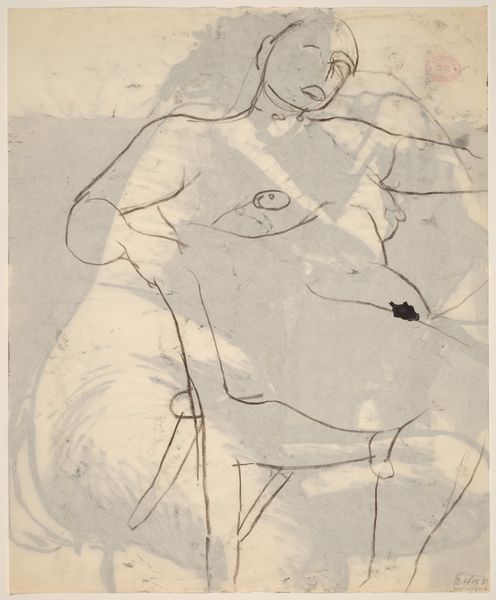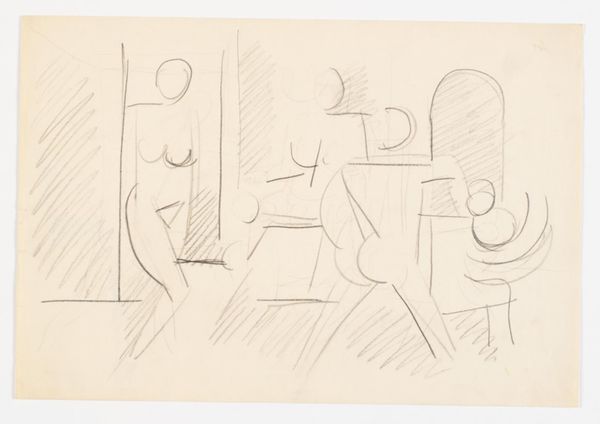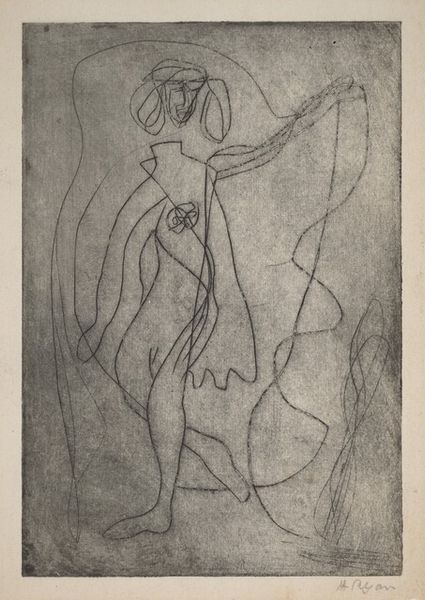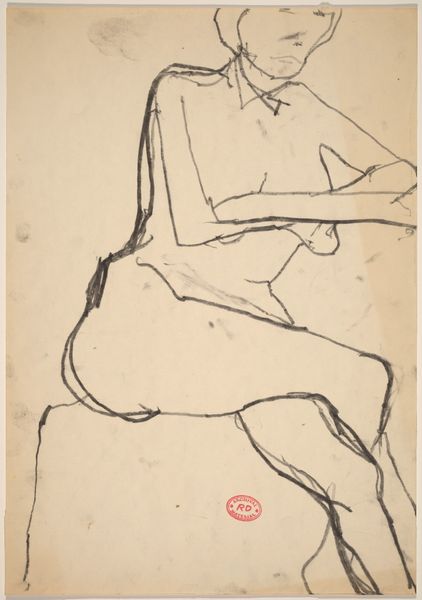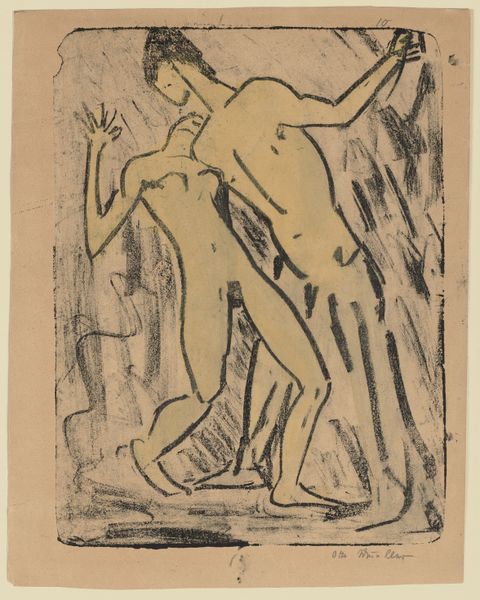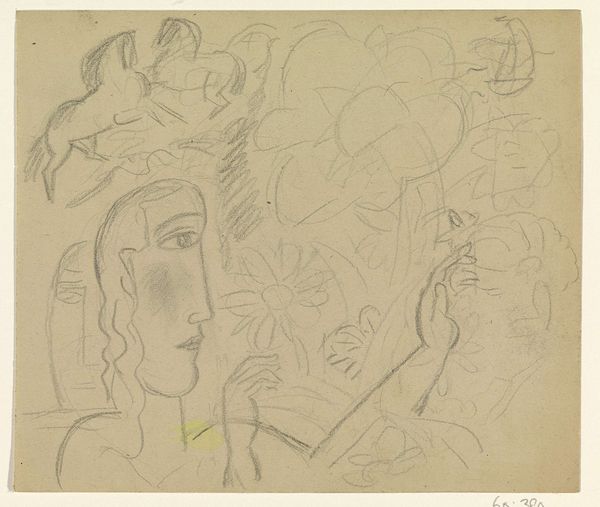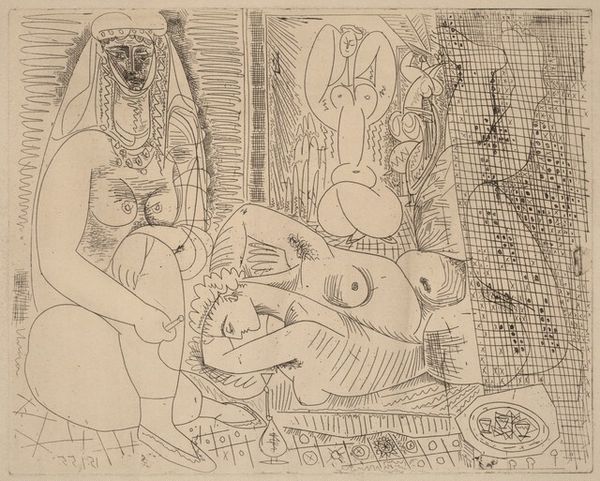
drawing, pencil
#
drawing
#
toned paper
#
light pencil work
#
pen sketch
#
pencil sketch
#
figuration
#
personal sketchbook
#
ink drawing experimentation
#
pen-ink sketch
#
pencil
#
sketchbook drawing
#
watercolour illustration
#
nude
#
sketchbook art
#
modernism
Dimensions: height 202 mm, width 175 mm
Copyright: Rijks Museum: Open Domain
Editor: Here we have Leo Gestel’s “Vrouwelijk naakt,” a pencil drawing from 1933. The composition is quite striking; the figure seems to be standing between two faces in profile. What do you see in this piece, beyond just a nude figure? Curator: It’s precisely that imposed duality that grabs my attention. Given the sociopolitical climate of 1933, and the burgeoning dominance of patriarchal and fascist ideologies, how might we interpret the artist’s positioning of the nude figure *between* those two prominent male profiles? Editor: Well, immediately I wonder about objectification. Is the figure trapped, somehow, or is there agency in her placement? Curator: Exactly! Consider the gaze. The figures in profile don’t directly engage with her. Could this be a commentary on the prevalent societal tendency to ignore the autonomy and lived experience of the female form, reducing her to a mere object of contemplation, existing only in relation to the masculine? Gestel was working in a very tumultuous era, grappling with many of the same anxieties we still face today surrounding representation, identity, and power. How might this be influencing the creation of such a work? Editor: It’s interesting how you frame it within the political climate of the time. So the drawing becomes less about the beauty of the nude, and more about...resistance? Curator: Perhaps a visual question rather than a concrete statement of resistance. Isn't art powerful exactly because it makes us think critically about these ingrained power dynamics? Editor: Absolutely, I hadn’t thought about it that way initially, but now I see how the historical context shifts the focus. Curator: And that interplay between the visual and the contextual, that’s where the real conversations begin! Editor: I’ll definitely keep that in mind as I study more works. Thanks for that illuminating perspective!
Comments
No comments
Be the first to comment and join the conversation on the ultimate creative platform.
